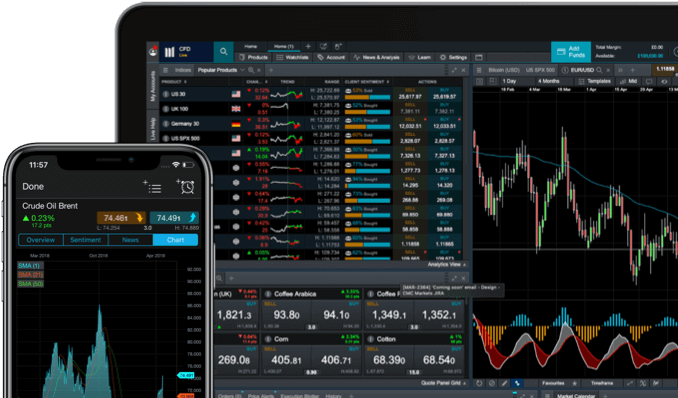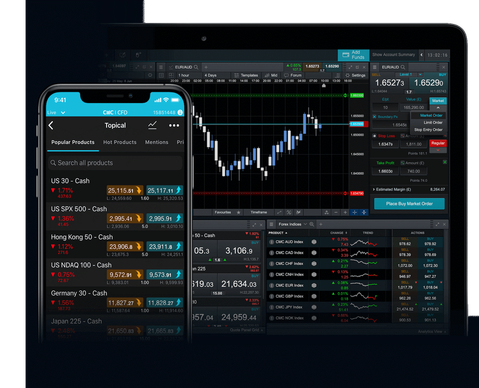
How to rebalance your portfolio
What is portfolio rebalancing and why is it important when it comes to your portfolio of investments? Learn all about portfolio rebalancing, what methods and strategies to use, advantages and disadvantages, tax implications, costs, and other factors to consider when reallocating or removing securities in a portfolio.

What is portfolio rebalancing?
Portfolio rebalancing is the process of keeping the original asset mix or proportions within a portfolio the same over time. Rebalancing is seen as important because it keeps the portfolio at the desired risk level and asset allocation. This stability allows for long-term goal planning.
Portfolio rebalancing brings a collection of investments back to its intended or updated configuration. This is required because asset prices rise and fall over time, resulting in those assets becoming a smaller or larger part of the overall portfolio. As this happens, the portfolio deviates from the originally selected portfolio allocation and risk tolerance.
For example, assume an investor has a £50,000 portfolio, and they invest half in stocks and half in bonds, and they want to maintain this ratio over time. Assume the stocks increase by 20% in a year and bonds increase by 3%. The stocks are now worth £30,000, and the bonds are worth £25,750, making the portfolio valued at £55,750. And stocks now represent almost 54% of that.
Over time, if this trend were to continue, stocks would continue to account for more and more of the portfolio value. This is not the original goal of the portfolio, so to rebalance it back to 50/50, the investor could sell some stock and buy more bonds.
Why is rebalancing important and what are the benefits?
Without rebalancing, a portfolio will change over time and no longer have the asset allocation, risk tolerance, or return potential initially decided upon. Here are some reasons why rebalancing is important:
- Rebalancing maintains the chosen asset allocation within a portfolio. Assets may include stocks, bonds, precious metals, money market funds, currencies, commodities, ETFs, and Real Estate Investment Trusts (REITs), for example. An investor chooses the percentage of each asset class they want in the portfolio. Over time, rebalancing assures that each asset maintains the same weight within the portfolio.
- Based on the asset allocation and investments within a portfolio, it will have a certain risk level that the investor chooses and is comfortable with. Rebalancing is required to maintain that risk level. Without rebalancing, over time, a portfolio may become much more or far less risky than originally designed. Rebalancing keeps the risk level and fluctuations within the portfolio at a personally comfortable level.
- The asset allocation and risk level of a portfolio can also determine its long-term return potential. Generally, a higher risk may be rewarded with higher return potential (although high risk can also mean an increased risk of loss). By looking at how assets within the portfolio have performed in the past, projections can be inferred about how the portfolio may perform in the future (past performance doesn’t guarantee future results). This can be used for goal setting and long-term financial planning. Rebalancing keeps the portfolio in line with these projections.
What are the dangers of not rebalancing?
By not rebalancing, the benefits mentioned above are reduced or eradicated.
Consider a stock investor who has a portfolio of stocks, with 5% of their capital allocated to each stock. Assume that over multiple years, one stock does very well, performing better than the other stocks in the portfolio. Over the course of five years, that stock now accounts for 30% of the total portfolio.
While this may seem good because the stock went up, the portfolio is steadily becoming riskier and more concentrated in one stock. If that stock were to crash, it could jeopardise retirement plans or long-term goals. This is called being overweight in the portfolio. The portfolio has overexposure to one stock. By comparison, the other stocks in the portfolio are underweight. The allocation for each stock, and risk tolerance of the whole portfolio, is no longer what it was originally designed to be.
This is why portfolio diversification is important.
Rebalancing strategies
There are several ways for investors to rebalance their portfolios. Each method or strategy has the same goal of keeping the portfolio aligned with the investor’s goals and risk tolerance.
Calendar rebalancing strategy
This rebalancing strategy is the simplest. An investor could determine desired ratios for the account, then, at a set time, such as yearly or quarterly, rebalance the portfolio back to the original asset allocation ratios.
Percentage of portfolio rebalancing
Once the asset allocation percentages are set for a portfolio, this model allows the portfolio to fluctuate until the percentages deviate by a specified amount. For example, let’s say an investor chooses to put 30% into stock, 30% into bonds, 30% into commodities, and 10% into money market funds, with a +/-5% deviation tolerance.
Periodically, the investor checks the portfolio. No changes are required until an asset has moved more than 5% (higher or lower) from the desired allocation. For example, if stocks now account for 37% of the portfolio, some stock needs to be sold, and the underweight assets are purchased to bring the portfolio back to the desired allocation.
Cash flow rebalancing
This approach is useful for those making regular cash contributions to the portfolio. They could use the cash to buy assets that are underweight or below their desired level within the account. This approach typically requires less selling of overweight assets; underweight assets catch up as capital is added to them.
If paying commissions, they could hold off on adding to an asset/position until there is a meaningful amount of capital to do so. You could avoid a situation where you buy £100 worth of stock and pay a £10 commission, for example, and instead, save up until the commission is small compared to the amount of asset purchased.
CPPI rebalancing
The Constant Proportion Portfolio Insurance (CPPI) approach keeps a certain amount of the account in money market funds (very low risk) or cash, and then the rest is in stocks (or any other assets chosen). This approach is useful if the investor wants to keep a certain amount of money easily assessable and safe.
The larger the account balance, typically the more capital that can be applied to stocks. As the account balance drops, more is allocated to money market funds or cash to protect it.
The formula for calculating CPPI rebalancing is:
Stock Investment (£) = M(TA−F)
[M = Investment multiplier (lower M = lower risk)
TA = Total portfolio assets (£)
F = Cash safety level]
For example, assume a low-risk investor wants to keep £50,000 of their £100,000 protected. The investor opts to use what’s called a 1.2 multiplier.
1.2 (£100,000-£50,000) = £60,000 in stocks and £40,000 in money market funds or cash.
The 1.2 multiplier means only £40,000 is allocated to cash as opposed to the £50,000 cash safety level. With a multiplier of 1, the formula would say to put £50,000 into both stocks and cash. A lower multiplier means less risk, while a higher multiplier means more risk because more capital will be put into stocks.
As the capital in the account changes, the new numbers are plugged into the formula to tell the investor how much they should have in stocks and money market funds.
Risk parity rebalancing
Risk parity attempts to achieve the desired risk level and rebalances to attain that. Risk parity uses leverage. Investors can use leverage to trade on more equities while still keeping bonds in the portfolio. The leveraged stock purchases help to increase the returns of the portfolio while holding bonds, which are historically less volatile, to help reduce the overall risk of the portfolio.
How much leverage is used and the ratio of stocks to bonds allows investors to fine-tune both expected performance as well as volatility.
Join a trading community committed to your success
How often should you rebalance?
There is no definitive answer on when to rebalance. Some investors rebalance once per year, some rebalance quarterly, while others rebalance only when the portfolio deviates from the original portfolio allocation by a certain amount or percentage.
Rebalancing isn’t always required. Therefore, some investors would look at their portfolio at least once per year to assess whether it has diverged enough to warrant rebalancing. A 5%, and especially a 10% or more, divergence is where it may become significant, according to investment advisor The Vanguard Group.
For example, if you said you would hold 50% of the portfolio in stocks, and it is now at 60% of the portfolio, some investors may consider rebalancing in this case to remain under the 5-10% divergence.
Rebalancing has costs associated with it (as discussed below), so rebalancing when it isn’t required may be a waste of money.
What are the costs related to rebalancing?
Rebalancing a portfolio requires selling some assets to buy others. This can incur commissions fees.
If the portfolio is not inside a spread betting account or other type of tax-protected account, sales of assets may be subject to capital gains tax. If the money needed to pay the capital gains tax is taken out of the portfolio, this reduces the compounding effect and amount of capital in the account. Learn more about spread betting with us, which is tax-free in the UK and Ireland*.
Traders should take costs into account when choosing how often to rebalance. Rebalancing too often can increase costs and reduce overall returns.
How to rebalance your portfolio
- Come up with a plan for how capital will be allocated within your portfolio. These ratios are what you could try to maintain over time.
- Set a date for when you will review your portfolio to see if it needs to be rebalanced.
- At the review date, see if the asset allocation is what it is supposed to be.
- If it is, then naturally, you may not need to do anything. If the allocations are different than the originally intended values, proceed to the next step.
- Determine which assets are overweight and underweight. For example, you could sell the overweight assets using the funds to buy the underweight assets. This should rebalance the portfolio back to the originally selected allocations.
- Over time, you may find that your goals or risk tolerance change. When this happens, start back at step 1 by redefining how you will manage and rebalance your portfolio.
Are there automatically rebalancing portfolios that can be traded on?
Yes, there are portfolios that automatically rebalance. Exchange-traded funds (ETFs) automatically rebalance.
We offer a number of exclusive share baskets, a CFD product consisting of a basket of stocks, whose portfolios are automatically rebalanced. For example, our RRG Momentum+ share baskets are created by us in collaboration with the founders of RRG Research and are based on holding a revolving CFD portfolio of stocks that are technically positioned to show strength going forward.
We also offer trading on stock index CFDs. Indices are portfolios of stocks regularly rebalanced by the creators of the index.
What happens when ETFs in your portfolio rebalance?
ETFs periodically rebalance. How often, when, and why is laid out in the prospectus for the fund. Generally speaking, a fund rebalancing may have little effect on the investors in the fund.
In rare cases when a substantial change is required in an ETF to rebalance, this may result in an unforeseen taxable event where shareholders are paid out gains, and they must then pay capital gains on that amount (if the ETF is held in a taxable account).
This is rare but not totally avoidable since the events that cause this are unforeseen. For example, if there is as a major change in an underlying index that the ETF is tracking.
What happens when a stock index rebalances?
A stock index rebalancing is typically a non-event, just like with the ETFs mentioned above. The index sells stocks that are overweight and uses the funds to buy stocks that are underweight. The index then continues trading until another rebalance occurs.
What can cause a bigger stir is when a new stock is added to the index. Some investors buy stocks when it is announced they will be added to a major stock index, like the S&P 500. Since the index will need to accumulate shares of the company, the investors are trying to front-run that buying and hopefully profit from it. Stocks that are added to a major stock index tend to see a temporary price rise following the announcement. However, this is not always the case.
When a stock is dropped from an index, this is usually because it has been a weaker performer. Some traders may look at these stocks for a possible short trade, although this strategy is less common. Traders should be cautious with buying or selling a stock solely because it is being added or dropped from an index.
NEW
Share baskets
Get exposure to the world's fastest-growing, trending industries, from Driveless Cars to Streaming Media
FAQ
Should you rebalance when the market is down?
When to rebalance is based on the rebalancing strategy selected. When the portfolio constituents witness a large price move, rebalancing may be required since the holdings within the account may no longer be in the correct proportions.
Is rebalancing necessary?
Some investors opt not to rebalance. They simply hold the positions they want to continue owning. They may add to or decrease these positions over time, but they are not following a specific rebalancing strategy. Rather, they are relying on a strategy that tells them when to buy and sell each investment.
Should I seek professional financial advice when rebalancing my portfolio?
It can be a good idea to seek professional advice, as rebalancing a portfolio, especially a large one, can take quite a bit of work. Consider which rebalancing strategy you wish to use or discuss this with the professional so that you have a plan that aligns with your trading goals.
*Tax treatment depends on individual circumstances and can change or may differ in a jurisdiction other than the UK.
CMC Markets does not endorse or offer opinion on the trading strategies used by the author. Their trading strategies do not guarantee any return and CMC Markets shall not be held responsible for any loss that you may incur, either directly or indirectly, arising from any investment based on any information contained herein.
Disclaimer: CMC Markets is an execution-only service provider. The material (whether or not it states any opinions) is for general information purposes only, and does not take into account your personal circumstances or objectives. Nothing in this material is (or should be considered to be) financial, investment or other advice on which reliance should be placed. No opinion given in the material constitutes a recommendation by CMC Markets or the author that any particular investment, security, transaction or investment strategy is suitable for any specific person. The material has not been prepared in accordance with legal requirements designed to promote the independence of investment research. Although we are not specifically prevented from dealing before providing this material, we do not seek to take advantage of the material prior to its dissemination.

